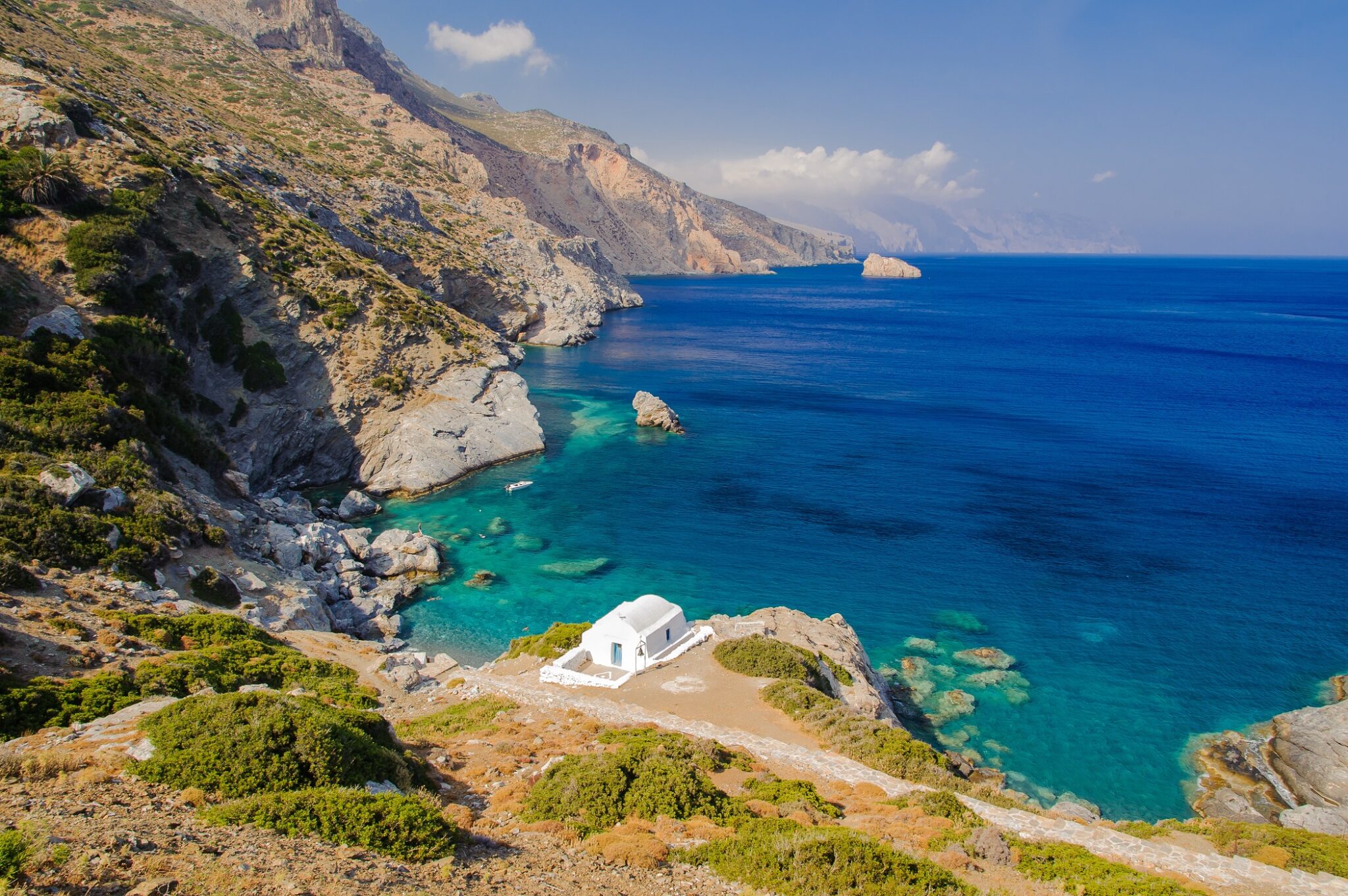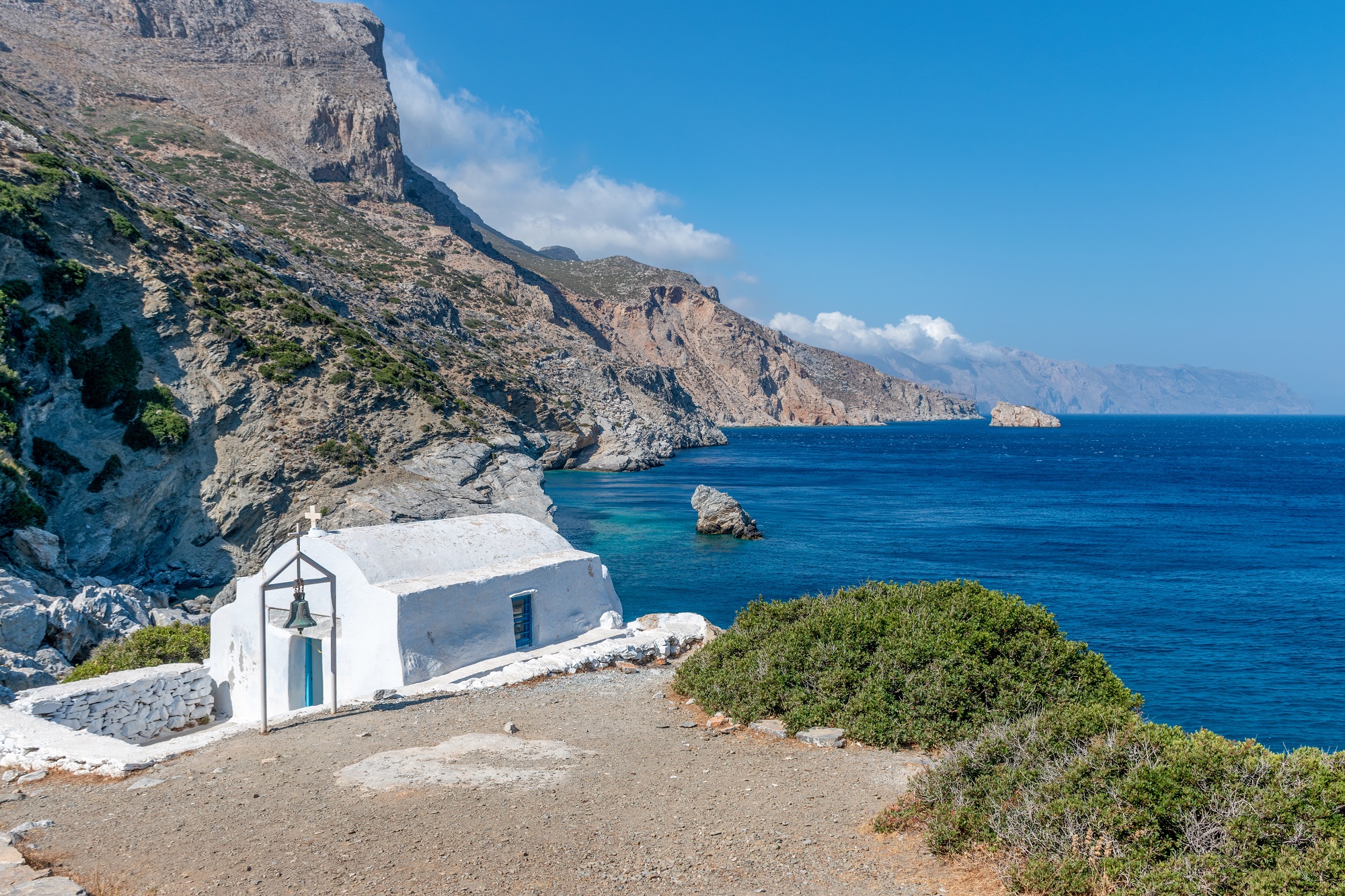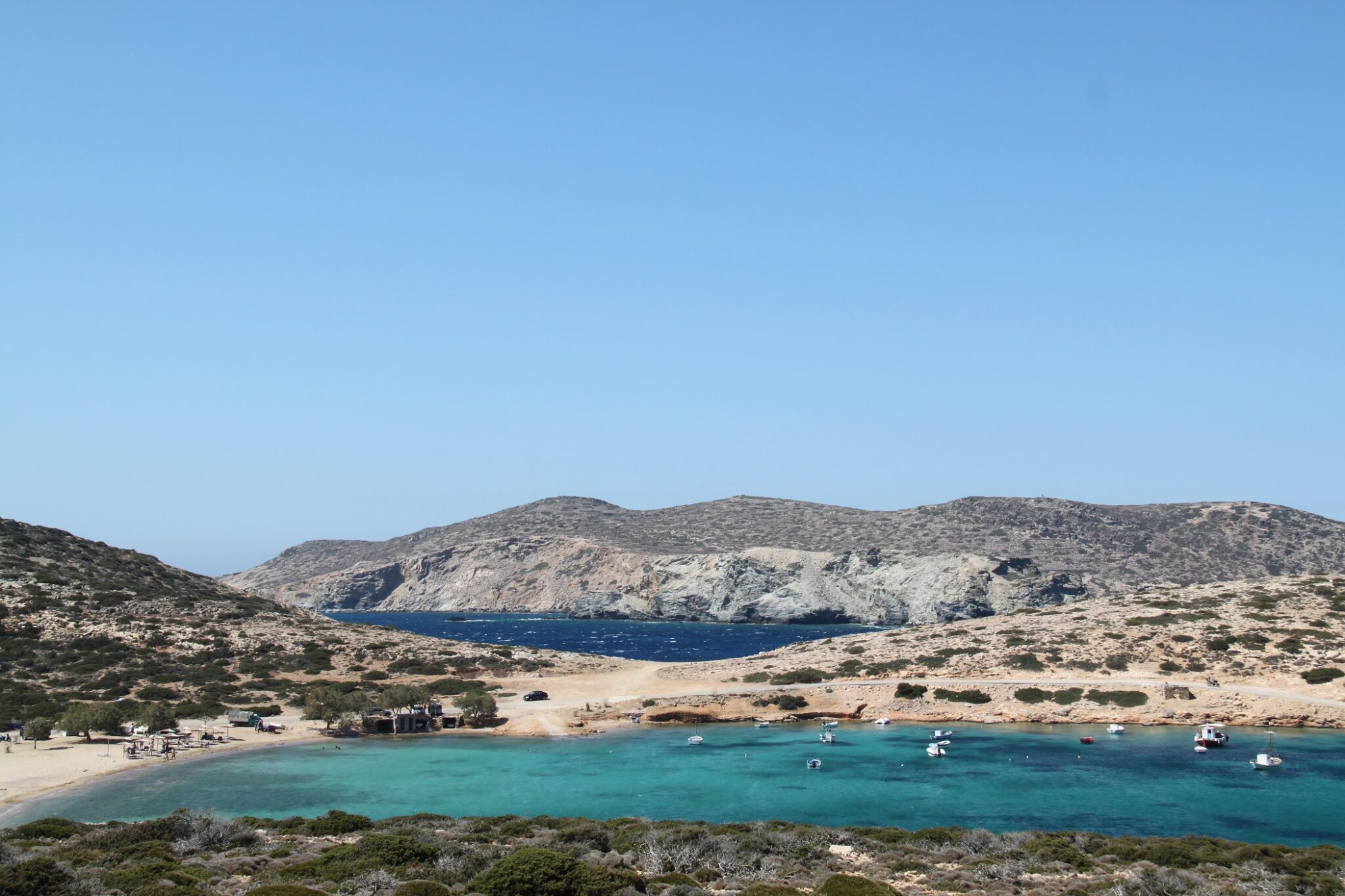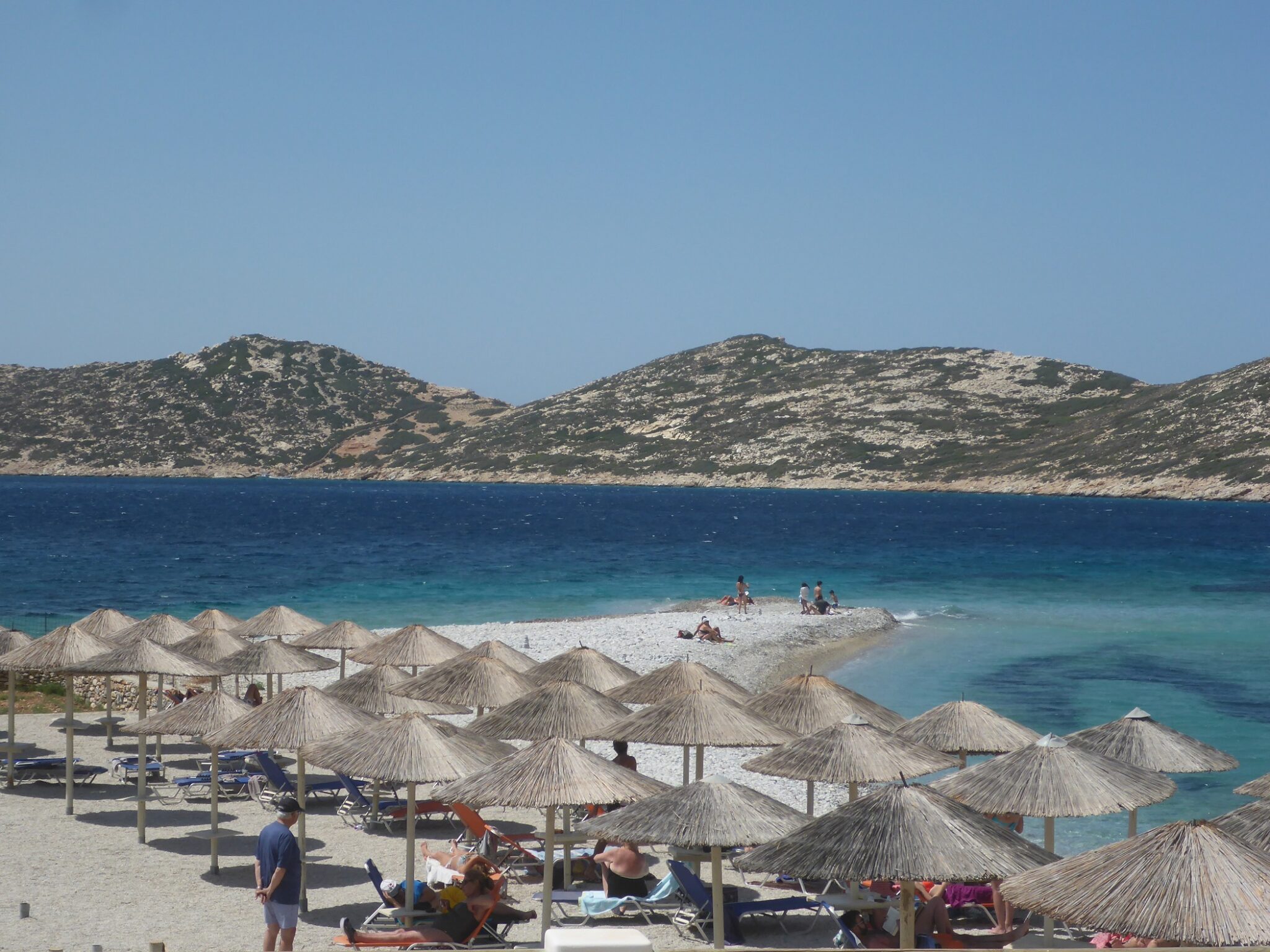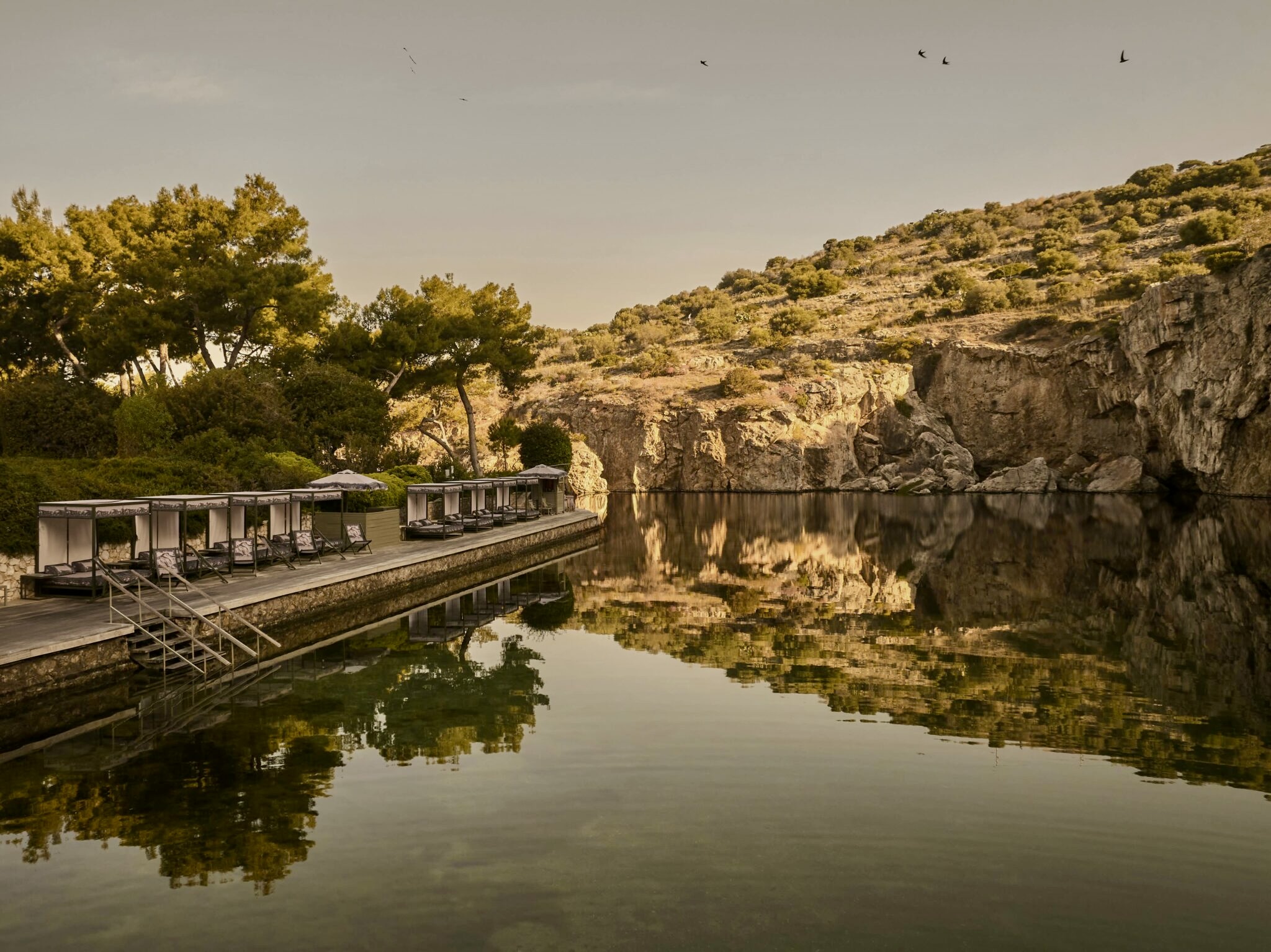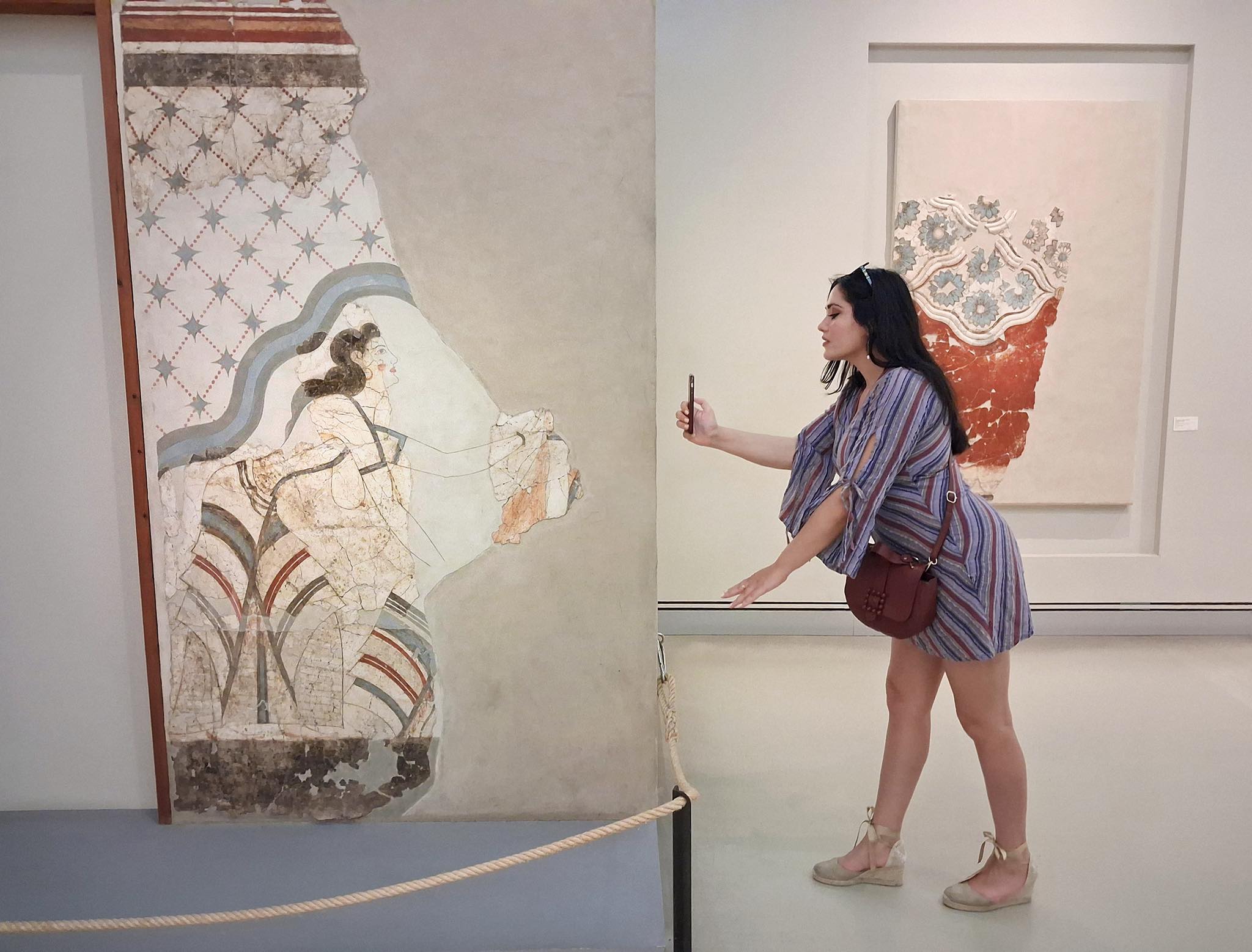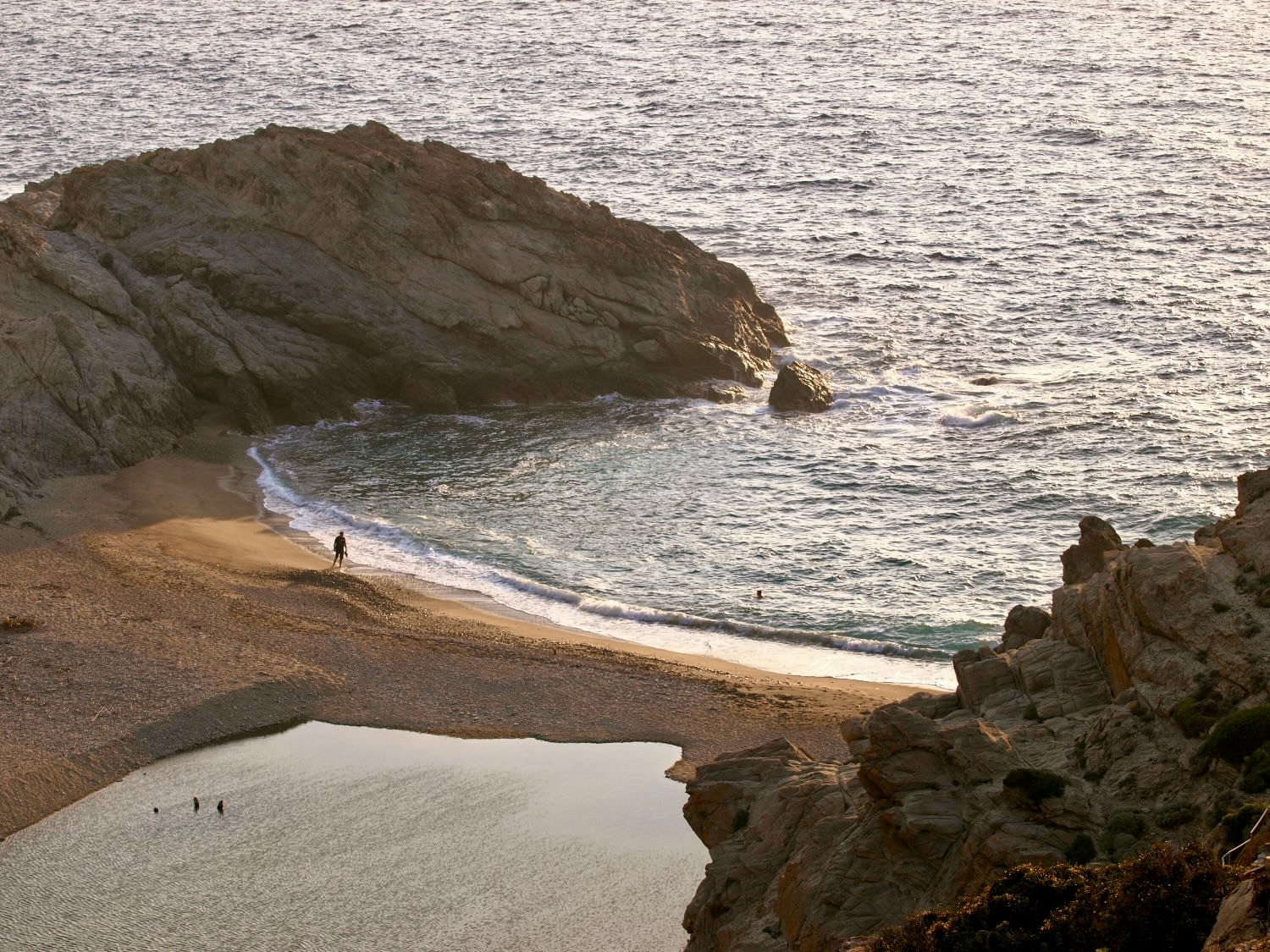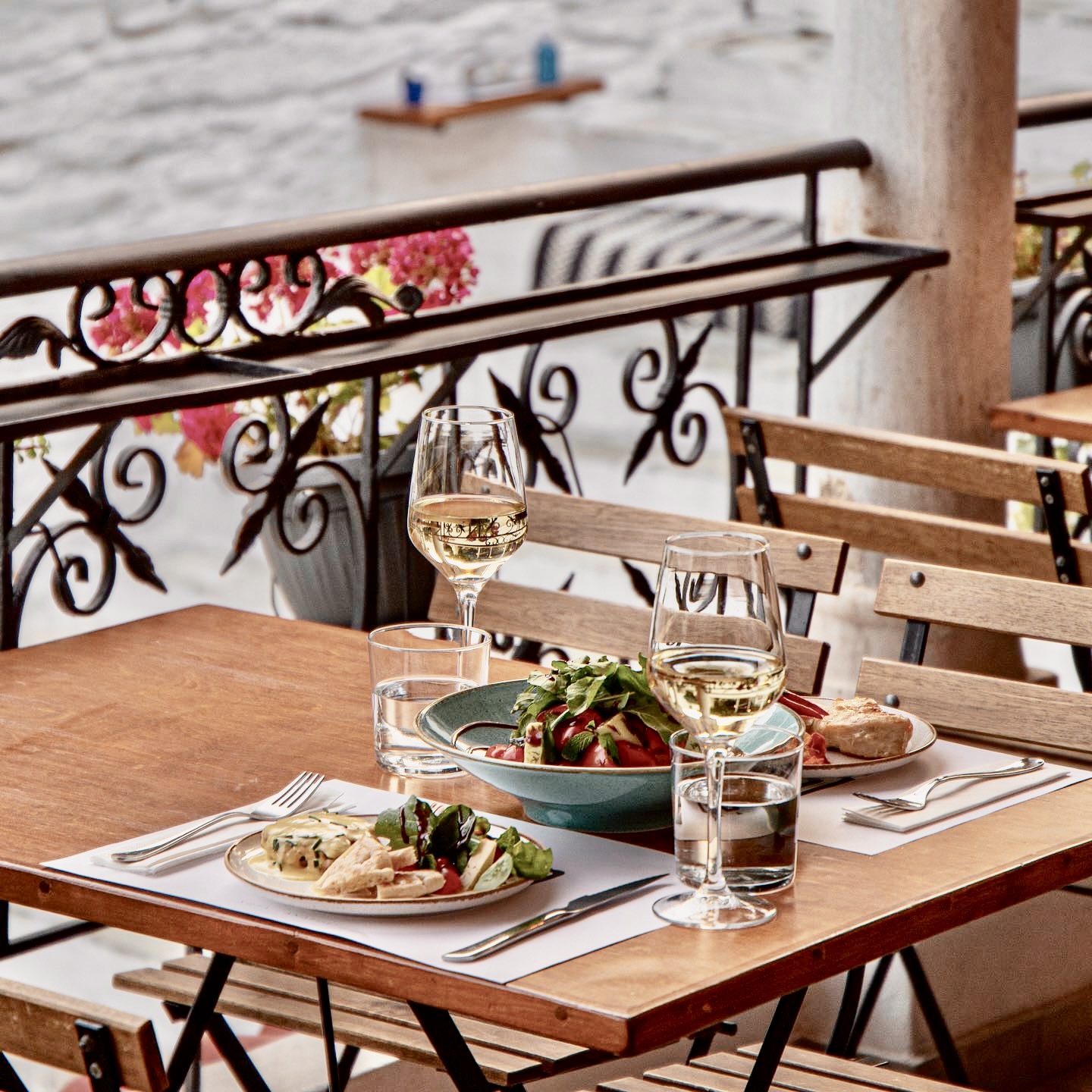This remote corner of the Aegean may take some getting to but the rewards at the end of the journey are manifold – golden sands, pebbled strands, cliff-backed coves engulfed by endless deep waters, Amorgos has it all.
Where to swim
Agia Anna: This is the beach that made Amorgos world famous in 1988, when the celebrated Luc Besson film was shot here, starring Jean Reno. It is just three kilometres from Chora and has particularly crystal-clear turquoise waters which, combined with the rocky coast and the views out to Mikro and Megalo Viokastro islands, create a postcard perfect landscape. The beach is small and gets busy, so if you want to visit, you should go early in the morning or in the late afternoon. Make sure you bring everything you need because there are no services, although there is parking above the beach. Weddings and christenings are often held in the small chapel that gives its name to the beach.
Mouros: One of the most famous beaches of Amorgos, with pebbles and wonderful deep waters. The seabed is ideal for snorkelling with underwater sea caves. It is about 2 km from Kamari and can easily be reached by car from Chora. The impressive, vertical cliffs that frame the small bay provide a stunning background for photoshoots, but offer little respite from the sun. There is a taverna with a car park above the beach with far-reaching views and from there it is a 10-minute downhill path.
Kalotaritissa: A pretty bay sheltered from the wind with the sandiest beach in Amorgos, Kalotaritissa is easily accessed by car, following the road to Arkesini. It has umbrellas, sunbeds, a beach bar, and tourist boats depart from here for the magical island of Gramvoussa. Make a detour on the way to the beach to visit the eerie shipwreck of the ‘Olympia’ in a nearby cove.
Levrossos: A sandy beach, about 20 minutes walk from Aegiali, it is one of the better beaches in the area. It used to be predominantly nudist, but nowadays it is popular with families with young children as the water deepens gradually and there is shade from trees. You can visit by boat, bus, or car, but parking spaces are limited. The path, starting at the parking area, is downhill and includes several steps, so it is not suitable for people with limited mobility. The beach is not serviced, but there is a taverna where you can eat, and you can also walk further to the smaller beaches of Psiliammos and Choklakas.
Maltezi: This beach is located northwest of Katapola and is considered one of the most beautiful in the surroundings. It is serviced, sheltered, with fine sand and turquoise waters. Access to Maltezi is by boat from the port of Katapola or by walking for about 20 minutes and following the path from the tiny village of Xilokeratidi.
Agios Pavlos: This is a shore with a distinctive shape; a curved finger of land entering the water. The beach is covered in large white pebbles and it has clear waters. It is serviced, with a beach bar, sunbeds, and umbrellas, while tourist boats depart here for the island of Nikouria.
Nikouria: You can swim on the shores of this small uninhabited island located across from the beach of Agios Pavlos. The islet has 3 beaches, all with sand and stones, and a nosey population of goats and sheep.
Gramvoussa: From the bay of Kalotaritissa, you can take a tourist boat and visit the island of Gramvoussa, a short ride nearby. With golden sand, clear waters and a view back across to Amorgos, it is popular with speedboats and ribs that approach the islet during the summer months. On the beach, you will find sunbeds and umbrellas, however there are no other facilities, so make sure you have the necessary supplies. Impressively, considering its remoteness and harsh terrain, Gramvoussa was inhabited until the 1990s when the last family left.
Read also:
Amorgos: The island of endless blue is on a roll
A village of unique beauty in the Cyclades, even in winter
Tinos: The calm force of the Cyclades



